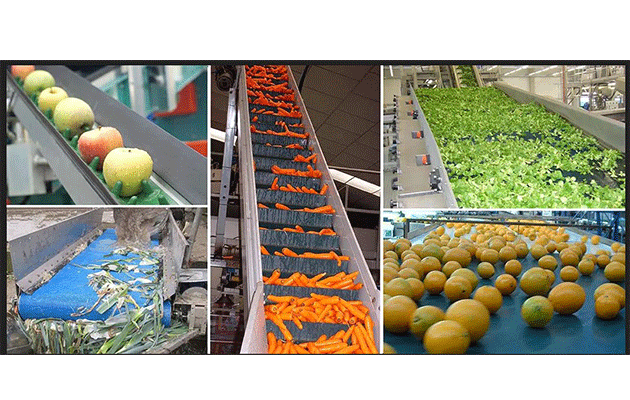Fruit and vegetable processing is a vital aspect of the food industry that allows us to enjoy these nutritious and delicious foods in various forms throughout the year. Whether it’s canned fruits, frozen vegetables, or fruit juices, processing helps extend the shelf life of these natural products while retaining their essential nutrients. In this blog, we’ll explore the six fundamental principles of fruit and vegetable processing, shedding light on the techniques that transform fresh produce into convenient and tasty products.
Cleaning and Sorting:
The first step in fruit and vegetable processing is thorough cleaning and sorting. This principle ensures that the raw materials are free from dirt, debris, and contaminants. Depending on the type of produce, cleaning methods may include washing, brushing, or even blanching. Sorting is equally crucial, as it separates damaged or low-quality fruits and vegetables from the good ones. This initial step sets the foundation for a safe and high-quality end product.
Blanching:
Blanching is the process of briefly immersing fruits and vegetables in boiling water or steam, followed by rapid cooling. This step serves several purposes:
Inactivates enzymes that can cause undesirable changes in color, flavor, and texture.
Reduces microbial load, increasing the shelf life of the processed product.
Helps loosen the skin, making peeling easier for certain fruits and vegetables.

Thermal Processing:
Thermal processing includes techniques like canning and pasteurization. These methods involve heating fruits and vegetables to specific temperatures for a predetermined time to destroy harmful microorganisms and enzymes. Canning, for instance, involves sealing produce in airtight containers and then subjecting them to high temperatures, effectively preserving them for an extended period. Pasteurization, on the other hand, uses lower heat to extend shelf life while retaining more of the natural flavor and texture.
Freezing:
Freezing is a popular method for preserving the quality and nutritional value of fruits and vegetables. This process involves quickly lowering the temperature of the produce to -18°C (0°F) or lower, which halts enzyme activity and prevents spoilage. Frozen fruits and vegetables are not only convenient but also often retain more vitamins and minerals compared to their canned counterparts.
Drying:
Drying is one of the oldest methods of food preservation. It involves removing moisture from fruits and vegetables, inhibiting the growth of spoilage microorganisms. Various techniques, such as sun drying, air drying, and freeze-drying, are employed to achieve this. Dried fruits and vegetables are lightweight, have a long shelf life, and can be used in various culinary applications, from snacking to baking.
Packaging and Storage:
Proper packaging and storage are the final principles of fruit and vegetable processing. Packaging materials must be chosen carefully to prevent spoilage, protect against external contaminants, and maintain product quality. Hermetically sealed containers, vacuum-sealed bags, and aseptic packaging are common options. Additionally, storing processed products in a cool, dry place away from direct sunlight ensures their longevity and safety.
Conclusion:
Fruit and vegetable processing is a crucial aspect of the food industry, allowing us to enjoy the benefits of fresh produce year-round. By adhering to the six principles of cleaning and sorting, blanching, thermal processing, freezing, drying, and proper packaging and storage, we can transform raw fruits and vegetables into safe, nutritious, and convenient products. These methods not only extend shelf life but also help us reduce food waste and ensure that healthy choices are always within reach. Whether you’re savoring a can of peaches or snacking on dried apple slices, you can appreciate the science and artistry that go into fruit and vegetable processing.
If you want to start a fruit and vegetable processing business, we can provide complete fruit and vegetable processing line and solutions. Contact us now to get more information.
